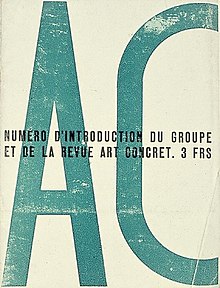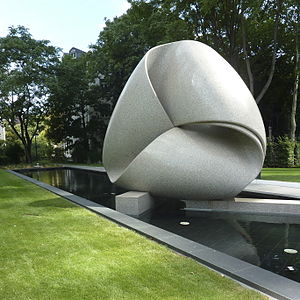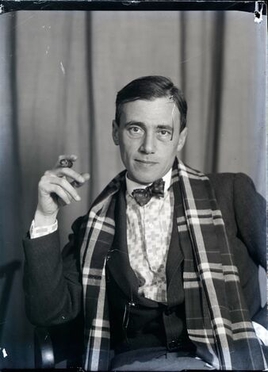
Hans Richter was a German Dada painter, graphic artist, avant-garde film producer, and art historian. In 1965 he authored the book Dadaism about the history of the Dada movement. He was born in Berlin into a well-to-do family and died in Minusio, near Locarno, Switzerland.

Abstract art uses visual language of shape, form, color and line to create a composition which may exist with a degree of independence from visual references in the world.

De Stijl, also known as Neoplasticism, was a Dutch art movement founded in 1917 in Leiden. De Stijl consisted of artists and architects. In a more narrow sense, the term De Stijl is used to refer to a body of work from 1917 to 1931 founded in the Netherlands. Proponents of De Stijl advocated pure abstraction and universality by a reduction to the essentials of form and colour; they simplified visual compositions to vertical and horizontal, using only black, white and primary colors.

Suprematism is an early twentieth-century art movement focused on the fundamentals of geometry, painted in a limited range of colors. The term suprematism refers to an abstract art based upon "the supremacy of pure artistic feeling" rather than on visual depiction of objects.

Theo van Doesburg was a Dutch artist, who practiced painting, writing, poetry and architecture. He is best known as the founder and leader of De Stijl. He was married to artist, pianist and choreographer Nelly van Doesburg.

Neoplasticism, known in Dutch as Nieuwe Beelding or the new image, is an avant-garde art theory that arose in 1917 and was employed mainly by Dutch De Stijl artists. The most notable advocates of the theory were the painters Theo van Doesburg and Piet Mondriaan. Neoplasticism advocated for an abstract art that had been purified by applying the most elementary principles through plainly rational means. Thus, a painting that adhered to neoplastic theory would typically consist of only simple shapes and primary colors.
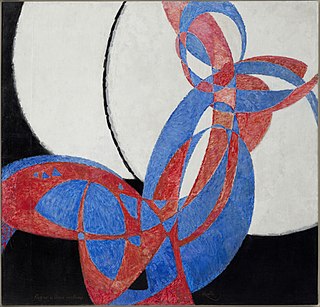
Geometric abstraction is a form of abstract art based on the use of geometric forms sometimes, though not always, placed in non-illusionistic space and combined into non-objective (non-representational) compositions. Although the genre was popularized by avant-garde artists in the early twentieth century, similar motifs have been used in art since ancient times.

Henryk Stażewski was a Polish painter, visual artist and writer. His career spanned seven decades and he is considered a pivotal figure in the history of constructivism and geometric abstraction in Poland. Stażewski was one of the few prominent Polish avant-garde artists of the interwar period who remained active and gained further international recognition in the second half of the 20th century.

Bart van der Leck was a Dutch painter, designer, and ceramicist. With Theo van Doesburg and Piet Mondrian he founded the De Stijl art movement.
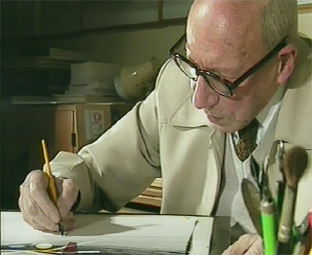
Fernand Berckelaers, pseudonym Michel Seuphor, was a Belgian painter.

Art Concret was a single-issue French-language art magazine published in Paris in 1930. It was the vehicle for a group of abstract artists who wished to differentiate themselves from others gathered around the magazine Cercle et Carré. Eventually most in both groups fused in the wider association of non-figurative artists, Abstraction-Création. Articles in Art Concret championed strictly geometrical art, free of personal interpretation and based on mathematics. It also ridiculed the sloppy and imprecise vocabulary of contemporary art criticism. The concept of Concrete Art championed by the magazine was thereafter taken up by other artists and became influential internationally.
Alberto Magnelli was an Italian modern painter who was a significant figure in the post war Concrete art movement.
Linien was an artists' association in Denmark in the 1930s and 1940s focusing on Abstraction and Symbolism. The group's exhibitions in Copenhagen created wide international participation. After the Second World War, the association was revived as Linien II with an emphasis on Concrete art.
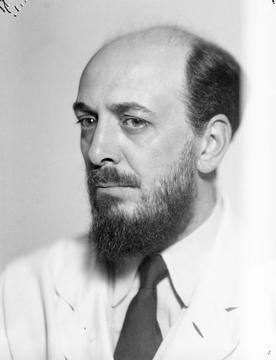
Otto Gustaf Carlsund was a Swedish avant-garde artist and art critic, connected to Cubism, Purism, Neo-Plasticism, and Concrete art.

Albert Jean Gorin was a French neoplastic painter and constructive sculptor. He was a disciple of Piet Mondrian, and remained true to the concept of rigid geometricism and use of primary colors, but pushed the limits of neoplasticism by introducing circles and diagonals. He was known for his three-dimensional reliefs.
The Neo-Concrete Movement (1959–61) was a Brazilian art movement, a group that splintered off from the larger Concrete Art movement prevalent in Latin America and in other parts of the world. The Neo-Concretes emerged from Rio de Janeiro’s Grupo Frente. They rejected the pure rationalist approach of concrete art and embraced a more phenomenological and less scientific art. Ferreira Gullar inspired Neo-Concrete philosophy through his essay “Theory of the Non-Object” (1959) and wrote the “Neo-Concrete Manifesto” (1959) which outlines what Neo-Concrete art should be. Lygia Clark, Hélio Oiticica, and Lygia Pape were among the primary leaders of this movement.

Nelly van Doesburg was a Dutch avant-garde musician, dancer, artist and art collector. She performed under her dadaïst alias Pétro van Doesburg and used the pseudonym Cupera for her work as a painter.
The Asociación Arte Concreto-Invención (AACI) is an Argentinian art movement that focuses on Concrete Art. Following WWII, numerous pieces Latin American art as well as several Latin American artists used themes regarding Socialism and Reconstruction. Artists from the AACI proposed, for the first time in the history of Argentina, the necessity for an art that was different from symbolic, representational, and expressionistic art. They believed that their artwork, or "inventions" could harbor social change in their current Argentinian political climate. The founders of the AACI showed similar themes throughout their artworks, such as a desire to appear with universality, objectivity, and lack any sort of representativeness.
Walmar Wladimir Schwab was born in Moscow on 1 September 1902 and died in Onex, Switzerland, on 19 August 2000. A painter and print-maker in Paris during the 1920s, he later abandoned this for a career in chemistry and took Swiss nationality.

Composition IX is a painting from one of the leaders of the De Stijl movement, Theo van Doesburg. The painting, completed in 1918, hangs in the Kunstmuseum, The Hague, Netherlands.
